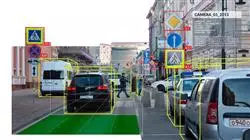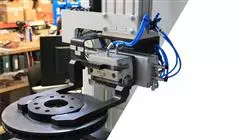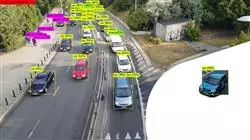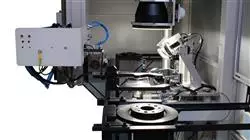University certificate
The world's largest artificial intelligence faculty”
Introduction to the Program
The current importance of Postgraduate diploma makes this program a safe bet, with a market in continuous growth and full of possibilities”

3D Capture Systems plays a crucial role in society by providing three-dimensional information from the real world. This allows intelligent systems to understand, interact and make decisions more actively in a variety of disciplines. An example of this is the video game industry, which uses these tools to control its experiences and user interfaces. However, such instruments present a number of challenges for specialists. For example, in overlapping environments, these mechanisms face obstacles in capturing complete data due to occlusions.
To help professionals overcome these challenges, TECH presents a Postgraduate diploma that will provide them with the most advanced techniques for capturing information. Designed by an experienced faculty, the curriculum will address in detail the composition of digital images, emphasizing color spaces. In addition, it will expose the keys for students to make the best use of digital cameras, taking into account factors such as depth of field or resolution. Also, the didactic materials will provide students with the most advanced visualization tools and the most modern Computer Vision libraries. It will also explore the state of the art of Computer Vision and its wide range of applications.
It should be noted that the methodology of this program reinforces its innovative character. TECH offers a 100% online learning environment, adapted to the needs of busy professionals seeking to advance their careers. In addition, it will employ the Relearning methodology, based on the repetition of key concepts to fix knowledge and facilitate learning. In this way, the combination of flexibility and a robust pedagogical approach makes it highly accessible. In addition, students will enter the a library full of multimedia resources in different audiovisual formats (such as interactive summaries and infographics) to make learning dynamic.
You will delve into the latest innovations in Computer Vision and Machine Learning thanks to this program”
This Postgraduate diploma in Computer Vision contains the most complete and up-to-date program on the market. The most important features include:
- The development of case studies presented by experts in computer science and computer vision
- The graphic, schematic, and practical contents with which they are created, provide scientific and practical information on the disciplines that are essential for professional practice
- Practical exercises where the self-assessment process can be carried out to improve learning
- Its special emphasis on innovative methodologies
- Theoretical lessons, questions to the expert, debate forums on controversial topics, and individual reflection assignments
- Content tha
- t is accessible from any fixed or portable device with an Internet connection
You will master Cloud Computing to store your files and data remotely"
The program’s teaching staff includes professionals from the sector who contribute their work experience to this educational program, as well as renowned specialists from leading societies and prestigious universities.
The multimedia content, developed with the latest educational technology, will provide the professional with situated and contextual learning, i.e., a simulated environment that will provide immersive education programmed to learn in real situations.
This program is designed around Problem-Based Learning, whereby the professional must try to solve the different professional practice situations that arise during the academic year For this purpose, the students will be assisted by an innovative interactive video system created by renowned and experienced experts.
Nurture your professional practice with the most advanced techniques in Digital Image Processing"

Relearning will enable you to learn with less effort and more performance, involving you more in your professional specialization"
Syllabus
This Postgraduate diploma is made up of 3 complete and updated modules, which cover the latest trends in the field of Computer Vision. Students will delve into the applications of this technology, such as hyperspectral and multispectral cameras. Likewise, the syllabus will delve into fundamental aspects such as the use of Computer Vision libraries, so that developers can work efficiently with images and videos. Además, durante la capacitación, los estudiantes adquirirán nuevas competencias que podrán aplicar con inmediatez a sus procedimientos habituales para experimentar un salto de calidad en su profesión.

You will learn through real cases and by solving complex situations in simulated learning environments”
Module 1. Computer Vision
1.1. Human Perception
1.1.1. Human Visual System
1.1.2. Color
1.1.3. Visible and Non-Visible Frequencies
1.2. Chronicle of the Computer Vision
1.2.1. Principles
1.2.2. Evolution
1.2.3. The Importance of Computer Vision
1.3. Digital Image Composition
1.3.1. The Digital Image
1.3.2. Types of Images
1.3.3. Color Spaces
1.3. 4. RGB
1.3.5. HSV and HSL
1.3.6. CMY-CMYK
1.3.7. YCbCr
1.3.8. Indexed Image
1.4. Image Acquisition Systems
1.4.1. Operation of a Digital Camera
1.4.2. The Correct Exposure for Each Situation
1.4.3. Depth of Field
1.4.4. Resolution
1.4.5. Image Formats
1.4.6. HDR Mode
1.4.7. High Resolution Cameras
1.4.8. High-Speed Cameras
1.5. Optical Systems
1.5.1. Optical Principles
1.5.2. Conventional Lenses
1.5.3. Telecentric Lenses
1.5.4. Types of Autofocus Lenses
1.5.5. Focal Length
1.5.6. Depth of Field
1.5.7. Optical Distortion
1.5.8. Calibration of an Image
1.6. Illumination Systems
1.6.1. Importance of Illumination
1.6.2. Frequency Response
1.6.3. LED Illumination
1.6.4. Outdoor Lighting
1.6.5. Types of Lighting for Industrial Applications. Effects
1.7. 3D Capture Systems
1.7.1. Stereo Vision
1.7.2. Triangulation
1.7.3. Structured Light
1.7.4. Time of Flight
1.7.5. Lidar
1.8. Multispectrum
1.8.1. Multispectral Cameras
1.8.2. Hyperspectral Cameras
1.9. Non-Visible Near Spectrum
1.9.1. IR Cameras
1.9.2. UV Cameras
1.9.3. Converting From Non-Visible to Visible by Illumination
1.10. Other Band Spectrums
1.10.1. X-Ray
1.10.2. terahertz
Module 2. Applications and State-of-the-Art
2.1. Industrial Applications
2.1.1. Machine Vision Libraries
2.1.2. Compact Cameras
2.1.3. PC-Based Systems
2.1.4. Industrial Robotics
2.1.5. Pick and Place 2D
2.1.6. Bin Picking
2.1.7. Quality Control
2.1.8. Presence Absence of Components
2.1.9. Dimensional Control
2.1.10. Labeling Control
2.1.11. Traceability
2.2. Autonomous Vehicles
2.2.1. Driver Assistance
2.2.2. Autonomous Driving
2.3. Computer Vision for Content Analysis
2.3.1. Filtering by Content
2.3.2. Visual Content Moderation
2.3.3. Tracking Systems
2.3.4. Brand and Logo Identification
2.3.5. Video Labeling and Classification
2.3.6. Scene Change Detection
2.3.7. Text or Credits Extraction
2.4. Medical Application
2.4.1. Disease Detection and Localization
2.4.2. Cancer and X-Ray Analysis
2.4.3. Advances in Computer Vision given the Covid19
2.4.4. Assistance in the Operating Room
2.5. Spatial Applications
2.5.1. Satellite Image Analysis
2.5.2. Computer Vision for the Study of Space
2.5.3. Mission to Mars
2.6. Commercial Applications
2.6.1. Stock Control
2.6.2. Video Surveillance, Home Security
2.6.3. Parking Cameras
2.6.4. Population Control Cameras
2.6.5. Speed Cameras
2.7. Vision Applied to Robotics
2.7.1. Drones
2.7.2. AGV
2.7.3. Vision in Collaborative Robots
2.7.4. The Eyes of the Robots
2.8. Augmented Reality
2.8.1. Operation
2.8.2. Devices
2.8.3. Applications in the Industry
2.8.4. Commercial Applications
2.9. Cloud Computing
2.9.1. Cloud Computing Platforms
2.9.2. From Cloud Computing to Production
2.10. Research and State-of-the-Art
2.10.1. Commercial Applications
2.10.2. What's Cooking
2.10.3. The Future of Computer Vision
Module 3. Digital Image Processing
3.1. Computer Vision Development Environment
3.1.1. Computer Vision Libraries
3.1.2. Programming Environment
3.1.3. Visualization Tools
3.2. Digital image Processing
3.2.1. Pixel Relationships
3.2.2. Image Operations
3.2.3. Geometric Transformations
3.3. Pixel Operations
3.3.1. Histogram
3.3.2. Histogram Transformations
3.3.3. Operations on Color Images
3.4. Logical and Arithmetic Operations
3.4.1. Addition and Subtraction
3.4.2. Product and Division
3.4.3. And/Nand
3.4.4. Or/Nor
3.4.5. Xor/Xnor
3.5. Filters
3.5.1. Masks and Convolution
3.5.2. Linear Filtering
3.5.3. Non-Linear Filtering
3.5.4. Fourier Analysis
3.6. Morphological Operations
3.6.1. Erosion and Dilation
3.6.2. Closing and Opening
3.6.3. Top Hat and Black Hat
3.6.4. Contour Detection
3.6.5. Skeleton
3.6.6. Hole Filling
3.6.7. Convex Hull
3.7. Image Analysis Tools
3.7.1. Edge Detection
3.7.2. Detection of Blobs
3.7.3. Dimensional Control
3.7.4. Color Inspection
3.8. Object Segmentation
3.8.1. Image Segmentation
3.8.2. Classical Segmentation Techniques
3.8.3. Real Applications
3.9. Image Calibration
3.9.1. Image Calibration
3.9.2. Methods of Calibration
3.9.3. Calibration Process in a 2D Camera/Robot System
3.10. Image Processing in a Real Environment
3.10.1. Problem Analysis
3.10.2. Image Processing
3.10.3. Feature Extraction
3.10.4. Final Results

No rigid schedules or evaluation timelines. That's what this TECH Global University program is all about!"
Postgraduate Diploma in Computer Vision
Immerse yourself in the exciting world of Computer Vision and master the skills needed to lead in this ever-evolving field with an exclusive Postgraduate Diploma created by TECH Global University. Designed for those passionate about artificial intelligence and visual perception, this course will provide you with an in-depth understanding of the fundamental principles and practical applications of computer vision. Through a 100% online methodology and a innovative syllabus, you will explore the basic concepts of computer vision, including image acquisition, data preprocessing, and feature extraction. You will learn how computer systems can interpret and understand the visual content of the world around us. In addition, you will develop skills in advanced algorithms and techniques used in computer vision. From object recognition and image segmentation, to motion tracking and three-dimensional reconstruction, you will explore the most powerful tools and methods for analyzing visual data.
Get qualified with a Postgraduate Diploma in Computer Vision
In this groundbreaking program, created by specialists, you'll discover the practical applications of computer vision in a variety of sectors, including manufacturing, medicine, security, transportation and more. You'll learn how these technologies are transforming entire industries and creating new opportunities for innovation. In addition, you'll dive into the world of machine learning and deep learning in the context of computer vision. Finally, you will discover how machine learning and deep learning models can improve the performance of machine vision systems in complex tasks such as object recognition and image classification. From this, you will envision your future as a computer vision expert at the forefront of technological innovation. You will become an in-demand leader, capable of designing advanced solutions that harness the power of computer vision to solve complex challenges in diverse fields. Make the decision and enroll now!







